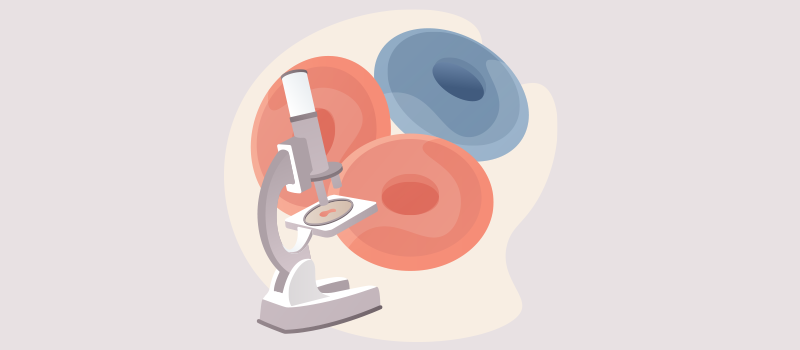What’s the Buzz
The Bee Healthy Blog
Myoglobin vs. Hemoglobin: What’s the Difference?

Hemoglobin and myoglobin are two types of oxygen-binding proteins in the human body. Both play critical roles in transporting oxygen and storing oxygen. They are similar in some ways but have differences in structure and function.
Please continue reading to learn about the difference between hemoglobin and myoglobin.
What is the function of hemoglobin and myoglobin?
Hemoglobin is an oxygen-carrier protein present in the blood, specifically in the red blood cells, of humans and other animals. It is a globular protein that binds to oxygen molecules and transports them from the lungs to other organs throughout the body. Cells in the human body need oxygen to produce energy; therefore, hemoglobin performs a vital function by transporting oxygen. Hemoglobin also carries carbon dioxide from the cells throughout the body to the lungs to be expelled.
Myoglobin is a globin protein that stores oxygen. It is present in muscle cells, including skeletal muscles (which attach to tendons and bones) and heart muscle tissue. Myoglobin binds oxygen very efficiently and stores oxygen until muscle tissues need it. Skeletal muscles and heart muscle cells have a high demand for oxygen due to their constant use. Therefore, myoglobin is an important muscle protein that contains stored oxygen.
What is the main difference between myoglobin and hemoglobin that results in their very different affinities for oxygen?
Both hemoglobin and myoglobin are globin proteins that function by binding oxygen. However, they have different affinities (attraction) for oxygen and their binding capacities.
Hemoglobin exhibits cooperative binding to oxygen, meaning it binds to oxygen tightly. It has a lower affinity for oxygen compared to myoglobin.
On the other hand, myoglobin exhibits non-cooperative binding, meaning it is an oxygen-binding protein that attaches to oxygen less tightly and has a higher affinity for oxygen.
The difference in the structure of hemoglobin and myoglobin is why there is a difference in oxygen binding capacity and affinity for oxygen.
What are the similarities and differences in the structure of hemoglobin and myoglobin?
Hemoglobin is a tetramer with a quaternary structure, meaning it has four polypeptide chains consisting of two alpha and two beta subunits. Each polypeptide chain consists of amino acids and has a heme prosthetic group and an iron atom. The heme group contains a red pigment called porphyrin, to which iron attaches. This is what gives blood its red color. Each iron atom binds to one oxygen molecule. Therefore, each hemoglobin molecule has four oxygen-binding sites. Consequently, each molecule of hemoglobin carries four oxygen molecules, which makes it a very efficient way to transport oxygen.
Myoglobin is a monomeric protein with a tertiary structure. It also contains heme proteins, but unlike hemoglobin, it has a single polypeptide chain and a single heme group. Therefore, myoglobin only has one oxygen binding site. However, it has a higher affinity for oxygen, meaning it can extract an oxygen molecule very efficiently from the blood. Myoglobin releases stored oxygen when required to meet the energy demands of muscle cells.
Which features of hemoglobin make it unique from myoglobin?
The key differences between hemoglobin and myoglobin are listed below:
Occurrence: Hemoglobin occurs in red blood cells and is an oxygen-carrier protein. Myoglobin serves as an oxygen storage protein and is present in muscle cells.
Function: Hemoglobin takes oxygen from the lungs to organs throughout the body—myoglobin functions as an intracellular storage site of oxygen in muscle tissues.
Molecular Weight: Hemoglobin has a molecular weight of 64 kDa. The molecular weight of myoglobin is 16.7 kDa.
Structure and Composition: Hemoglobin is a tetramer composed of four chains of polypeptides with a quaternary structure. Myoglobin is a monomeric protein made of a single polypeptide chain of amino acids with a tertiary structure.
Bound Oxygen: Hemoglobin binds with four oxygen molecules and is responsible for carrying oxygen throughout the body. Myoglobin binds to a single oxygen molecule and stores oxygen in muscle tissues.
Binding Capacity: Hemoglobin has a lower affinity for oxygen and exhibits cooperative binding. Myoglobin has a high affinity for oxygen and exhibits non-cooperative binding.
Wrapping Up: The difference between myoglobin / hemoglobin
Both hemoglobin and myoglobin are oxygen-binding proteins with a globulin chain. Each is a globular protein that contains an oxygen-binding heme group. Hemoglobin and myoglobin give the red color to blood and muscles, respectively. The main difference between hemoglobin and myoglobin is in their structure and function. Hemoglobin has four polypeptide chains, and its function is to transport oxygen. Myoglobin has only one polypeptide chain, and its function is to store oxygen for use by muscle tissue.
References:











SOCIAL